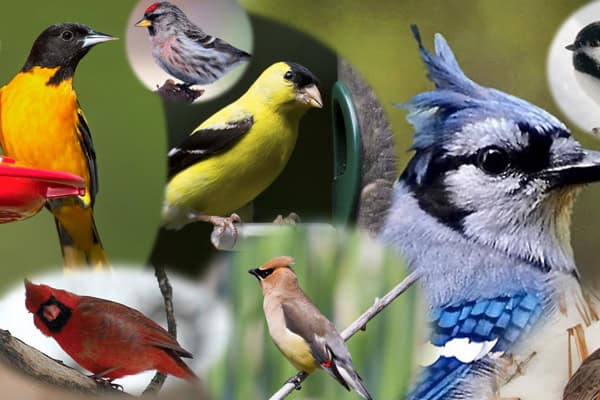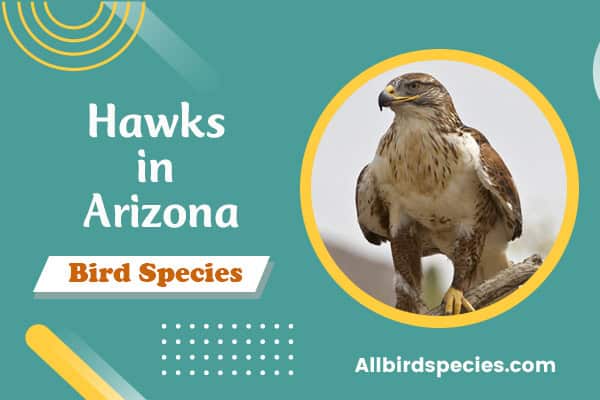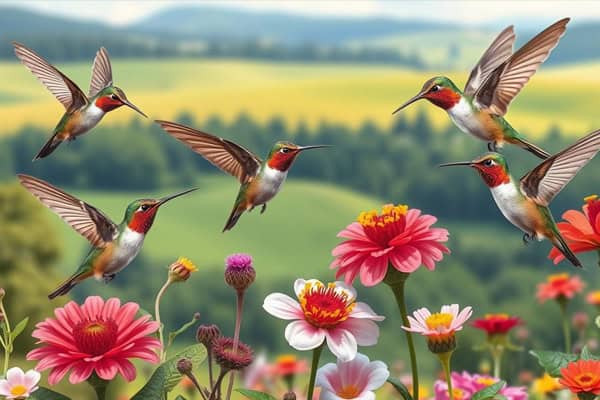10 Beautiful Birds in Minnesota (With Pictures)
Ever think about what amazing backyard birds you might see in Minnesota? Thanks to its different landscapes and climates, the state is perfect for many birds. You can find everything from colorful songbirds in spring to impressive raptors in winter. So, Minnesota is a dream for birdwatchers. This article will introduce you to 10 of the prettiest and most seen birds. You might just see them from your window.
A pair of majestic Bald Eagles soaring over a serene lake surrounded by lush green forests.
Here we’ll learn about 10 Stunning Birds That Found in Minnesota!!
1. Scarlet Tanager
The Scarlet Tanager attracts us with vibrant tropic colors in Minnesota’s forests. Its red body and sleek shape are truly stunning. Not many know they can see these beautiful birds close to home.
Vibrant Red Coloration
The Scarlet Tanager stands out with its bright red feathers. It uses this color to find a mate and to say “This is my area!” It’s the littlest of the four tanager species in North America, at only 7 inches long. The other tanager types don’t show up here, so birds in Minnesota are special for seeing these bright red birds.
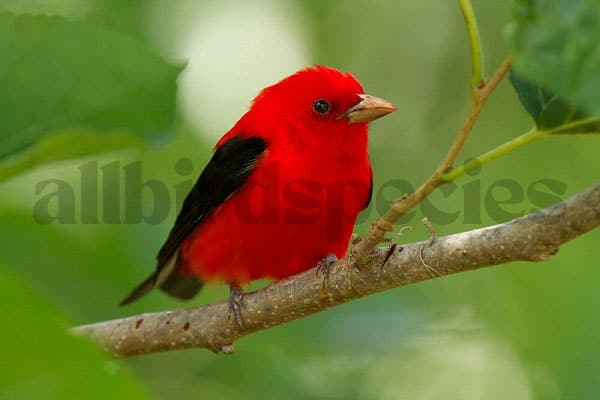
Flying to Minnesota, these birds feast on lots of bugs and find good spots to build nests. Their kids learn to fly and then follow them to South America each fall.
In May 2023, the rare sight of a Scarlet Tanager was seen at Lake City, Minnesota. Another spotting at Norman County in May 2022 showed they like to live near creeks. A local bird lover said they come in mid-May and leave in August, making their visits seasonal.
Reports show up to 10 males and 4 females feeding in Cottonwood, Minnesota, in May 2020. One male was stunningly spotted around 3 PM in Rochester, Minnesota, in May 2019.
Observers saw Scarlet Tanagers in different parts of Minnesota many times. Their repeat visits suggest some areas are great for these birds.
At Elmcrest Park, Ramsey, Minnesota, a Scarlet Tanager was seen with other birds, showing the rich variety in May 2019. In July 2016, in Winona, Minnesota, their presence by a pond in a valley highlighted their favorite places.
2. Red-headed Woodpecker
The red-headed woodpecker truly stands out with its unique appearance. It has a bold red head that contrasts with its white chest and stomach and a black back. Seeing this bird’s vibrant colors up close is amazing. It makes us feel like we’re looking at red for the first time.

The red-headed woodpecker does some unique things. It’s among four North American woodpeckers that store food. And it’s the only one that hides the food under wood or bark. Also, in the 20th century, events like chestnut blight and Dutch elm disease helped red-headed woodpeckers. These events created more places for them to build nests and find food. We even have fossils of them from up to 2 million years ago. These fossils were found in Florida, Virginia, and Illinois. The oldest known red-headed woodpecker lived over 9 years.
Minnesota is home to nine woodpecker species that breed there. Some live there in the winter. During late winter, woodpeckers hint at spring with their drumming calls. Sadly, the red-headed woodpecker’s numbers are falling because it’s losing its home.
3. Iconic Baltimore Oriole
The Baltimore Oriole is truly iconic. Its bright plumage bursts with vibrant orange. It’s the most widespread oriole, found from Eastern Montana to southern Canada. Even on a gray day, seeing one brings a tropical splash of color.

In summer, these birds travel to Minnesota from Central America. They bring joy to birdwatchers with their stunning looks. Females and young birds are less colorful. They are mostly yellow or soft orange with pale wings. The Baltimore Oriole shows the rich variety of birds in the area.
Migratory Visitor from Central America
As winter turns to spring, the Baltimore Oriole’s journey north signals the change. The adult male’s bright orange feathers look amazing against green leaves. It’s a sight to remember.
4. Magnificent Blue Jay
The Blue Jay is truly stunning, with its iridescent blues and bold patterns. Even though it’s a common sight in Minnesota, many people don’t fully appreciate it. Its bright colors and impressive look are amazing. Yet, some see it as a bother. But, the Blue Jay is smart and can live in many places. It is a vital part of Minnesota’s bird world.
Iridescent Blues and Bold Patterns
The Blue Jay’s look is breathtaking, with shiny iridescent blues and sharp black-and-white patterns. They are not just beautiful but also very smart, and able to live in different environments. Their brave ways and unique calls make them a key part of Minnesota’s bird group.
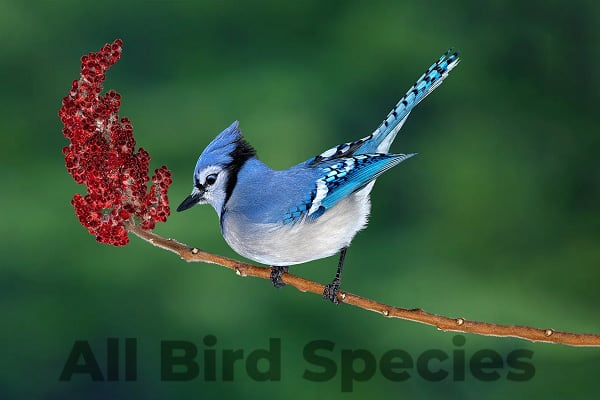
Although Blue Jays are common in Minnesota, many people don’t get them. Some think they’re loud, pushy, or just a bother. They miss seeing their true worth and how they help nature. Actually, Blue Jays are vital for spreading oak trees. They also keep bug numbers down. These tasks show how important they are in nature.
Spending time to watch and value the Blue Jay’s beauty and actions can change how we see them. They remind us of the beauty right outside our homes. They are more than just good-looking. They are a key part of Minnesota’s natural life.
5. Wood Duck
The male wood duck is one of the most beautiful birds in the world. Its plumage and colors have amazed people for years. This bird lives mainly in the United States and parts of Canada. To truly understand its beauty, you have to see a wood duck up close.
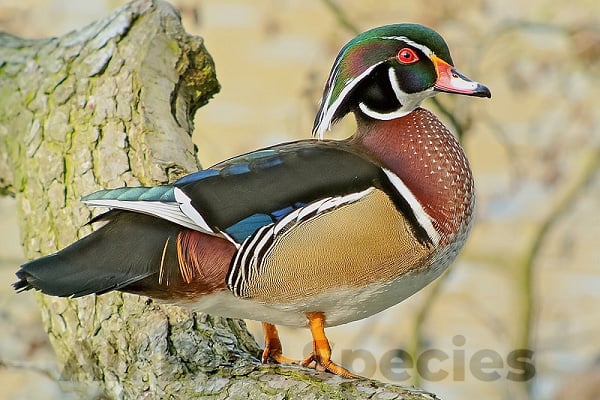
Intricate Plumage and Iridescence
Male wood ducks are the brightest of all North American waterfowl. At the right angle, their feathers shine with colors like bronze, purple, and green. They use their stunning looks to attract mates.
The wood duck is a living artwork. It shows us the beauty of nature and evolution. This bird is found widely across the US and is well-hidden in Minnesota. They are called “summer ducks” because they breed in the south during summer. They make their nests in tree cavities high above the ground. Conservation efforts have helped the wood duck thrive in Minnesota.
Show a wood duck in a serene, natural setting. The duck should be perched on a branch, feathers shining in the sunlight. The background should feature the calm waters of a forested pond, with trees and foliage reflecting on the surface. The overall tone should be peaceful and tranquil, evoking the quiet beauty of the Minnesota wilderness.
6. Blackburnian Warbler
The Blackburnian Warbler stands out in Minnesota for two reasons: its rarity and its bright orange color. Its head shines with a stunning orange glow when caught in sunlight. This site is hard to forget for anyone. Observing this bird in all its orange splendor is truly remarkable. It’s a special moment for any birdwatcher who sees it.
In Minnesota, the Blackburnian Warbler is known for its vibrant orange hue. There’s something special about seeing such a rare, brightly colored bird in the state. These warblers migrate to and from South America, showing nature’s incredible journey. The fact that one lived over 8 years in Minnesota proves their strength and endurance.
Finding a Blackburnian Warbler in Minnesota is a challenge many birdwatchers take on. Their choice of habitat and migration routes makes them not always easy to spot. But, when you do get a glimpse of a wild Blackburnian Warbler, it takes your breath away.
7. Great Blue Heron
The great blue heron doesn’t have bright colors like some bird friends. But its size, grace, and breeding plumage shine. It stands tall and catches the eyes with its silhouette. The feathers on its head and neck add to its beauty. Watching it glide over water or stay still looking for food is amazing. It shows the grace and power of Minnesota’s large birds and elegant birds.
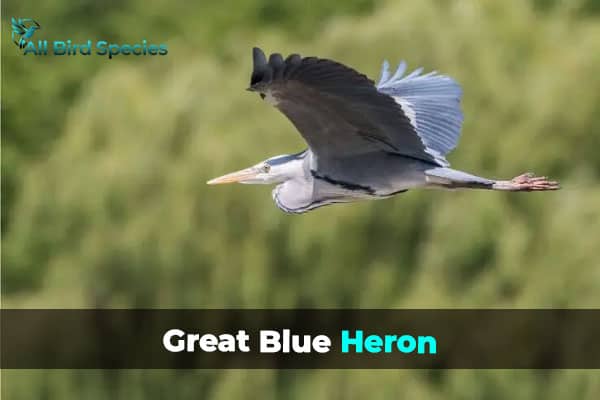
Grace and Delicate Breeding Plumage
The first great blue heron this spring was seen on March 18 in Faribault. It marked their return to nesting sites. They often nest on Mississippi River islands near downtown Minneapolis. Marshall Terrace Park in Minneapolis is a top spot to see them in Minnesota. Their annual return for nesting brings many people to the park.
In Minnesota, you’ll mostly find the great blue heron near water. They nest high in trees, often in large groups. Each colony may have up to 500 breeding pairs. These herons are over 3 feet tall and have 6-foot wings. Yet, they weigh under 7 pounds.
8. American Goldfinch
The American Goldfinch is such a joy. It shines, with its yellow feathers like rays of sunshine. This bird caught my eye with its beauty. It’s hard to miss them during the breeding season. Their yellow shines so bright, it’s like they’re glowing. In Minnesota, they’re a highlight among backyard birds. They bring color, joy, and amazement to all who see them.

A Burst of Sunshine
The American Goldfinch is a true delight. Its yellow plumage brightens even the darkest days. During the breeding season, their feathers light up. It’s a sight that captures everyone’s attention. Birds In Minnesota backyards, these birds are treasures. They add vibrant color and spread happiness wherever they go.
9. Indigo Bunting
The Indigo Bunting shines as a blue marvel, its feathers catching the light. It differs from other blue birds because its shade comes from how light bounces off its feathers. This bird elevates blue to a stunning level, delighting all who see it.
A Master of Blue Hues
The Indigo Bunting is a rare sight in summer, found in Minnesota. They choose places like thickets, edges of forests, and open fields. Males are noticeable by their bright blue and singing patterns. They often look like other bluebirds, but their beaks are key identifying features.

They’re seen in the east and into southern Canada in summer, then fly to northern South America for the winter. Their feathers don’t really have blue pigment; it’s how light interacts with them that makes them appear blue. Some people see them a lot, while others experience them just a few times, showing their unpredictable presence.
Check Our Previous Articles:
These birds come back north each spring to nest. Some stay in Florida all year. They like farm areas and open fields, which means they live in many different places.
Indigo Buntings are among North America’s prettiest birds. They live in certain woodlands and fields and on utility wires. They have two sets of chicks during the mating season. These birds learn songs from others after leaving their nests. By September, they head south to Mexico and beyond. The blue we see on them is a special light effect on their feathers.
We’ve gathered a lot of data on Indigo Bunting sightings in Minnesota. These birds have been seen in many places, like Pequot Lakes and more. Some spots have had sightings of several Indigo Buntings feeding together. Reports cover sightings from 2002 to 2024, showing a wide period. These sightings, while more common in the east, highlight first-time notices in Minnesota. The varied habitats these birds are seen in include backyards, gardens, and prairies.
10. The Beloved Northern Cardinal

The Northern Cardinal is a much-loved bird in Minnesota backyards. Its bright red color and crest set it apart. Back in 1980, many were found across Wisconsin. There were 3,049 Cardinals in the Christmas Bird Count. They were common in the west of Wisconsin, often in groups of 15-30 around corn cribs and hedges.
Though these birds are common, they are truly special. The Northern Cardinal has 18 different kinds. Each type has a beautiful red color and a beak perfect for eating seeds. Even when they’re everywhere, their beauty is hard to forget. They remind us to see the wonder in the nature around us.
Finding a Cardinal in unique places is a joy. This bird’s area has grown north since the 1950s. Now, you can see them in southeastern Canada and Minnesota. They’ve been picked as the state bird in seven states. These include Illinois, North Carolina, and more.

